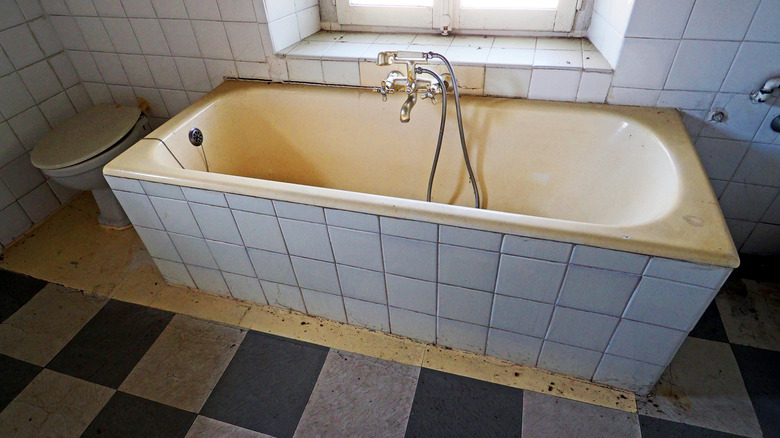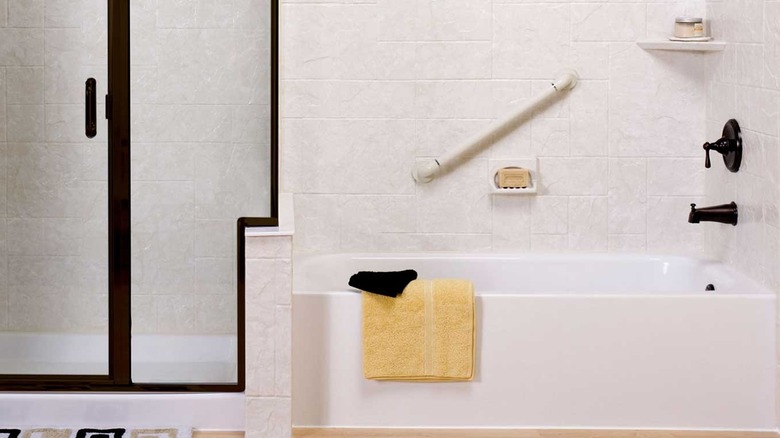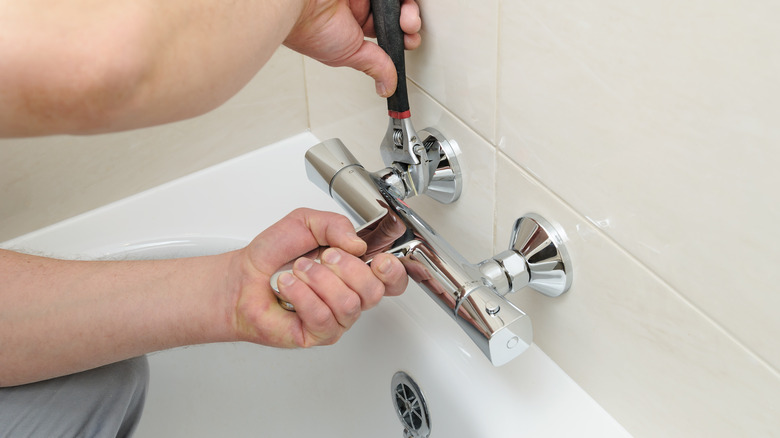Installing A Bathtub Liner Like A Pro Is Pretty Simple If You Follow These Steps (& Why You'd Want To)
Bathtub liners are like magic. Your ratty old builder-grade fixture suddenly looks better than new, without anything resembling demolition or construction. It's cheap, effective, and — if you do it right — durable. And chances are you're not planning to do it wrong ... though you certainly can.
Some people will probably try to dissuade you from installing your own bathtub liner — usually either installers or someone selling a competing product. They will warn that these inserts must be installed by professionals, and they have a point. While it's not difficult work, it is exacting, and there's a high premature failure rate for tub liners that aren't installed properly.
What's involved is mostly work of two sorts: Prepping the old and new tub surfaces for sticking together properly, and sticking them together properly. A few things can go wrong, but the most common is water working its way into the space between the tub and liner. The two kinds of forces that act on a tub's floor — people standing on it and moving about while showering, and large, enormously heavy quantities of water — work with the liquid itself to further delaminate the liner. Before long, you have a moldy, smelly, unsightly, uncomfortable mess. You almost certainly will not be doing the first step in installing your bathtub liner: Measuring for the insert. This will be taken care of by the company you order your product from. Beyond that, the installation is typically just a matter of taking your time and doing everything in the right order on the right schedule.
Installing tub liner like a pro
The first step you're likely to perform is probably the one you were trying to avoid in the first place: Correcting any issues with the tub itself. Liners are window dressing, for the most part, and installing one over a fixture with leaking, drainage, or structural issues can easily make things worse — and more difficult to fix. If you spot any signs it's time to install a new bathtub, you'll either need to correct them or replace the container. Address any cracks or chipping with an epoxy filler and check the operation of your drain line carefully to make sure there's no plumbing to be dealt with. Then clean the tub thoroughly with a limescale remover, any abrasive necessary to remove soap scum and other buildup, and a good scrubbing with alcohol to finish.
Once your custom-produced tub liner arrives, you can be installing it in earnest. Perhaps most importantly, follow all manufacturer's instructions for the materials you use. Taking any shortcuts with cure times, etc., can make the whole effort fall apart. Start by removing your faucet, overflow, and drain cover hardware. Apply butyl primer near the edges of your existing tub, including around the drain and overflow, then apply butyl tape over the coating. Now, cover the entire underside of your insert with butyl tape, then cover the old tub with silicone adhesive — especially around drains — and fit the liner into place. Apply even pressure to ensure a good seal with the silicone. Finally, replace your hardware.
Why you might want to install your own tub liner
The reasons for using a tub liner are clear enough. They're durable, attractive, about half the price of replacement, and longer-lasting than refinishing a bathtub. Liners are made in a number of modern materials (acrylic, fiberglass, PVC, and others) that are engineered to perform well. These materials are available in a wide variety of styles to match your bathroom, and you can usually put everything in place without any demolition, plumbing, or framing. Installation usually takes about a day.
Why you'd choose to DIY the installation is a much simpler equation: It's likely to save you around $1000, possibly more. HomeGuide's somewhat convoluted examination of tub liner costs reveals that the average insert falls somewhere between $1,700 and $2,500, including both materials and labor. The cost for the liner itself is usually in the $850 to $1,400 range, meaning you can realize a savings of $850 to $1,100 by doing the labor yourself (this doesn't include the expense of revamping your dated tub surround). A $1,400 bathtub liner puts your costs at less than half that of a cheaper tub replacement. And while that's still more than twice the expense of refinishing the bathtub (about $300 to $560), you'll end up with a solution that lasts a lifetime rather than just a few years.


